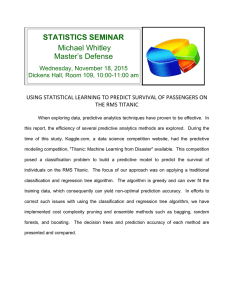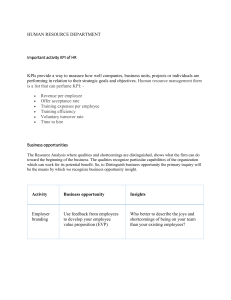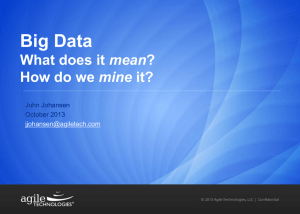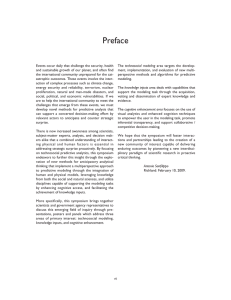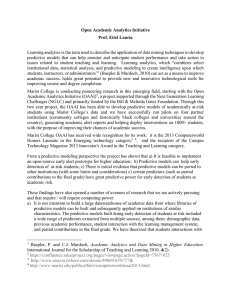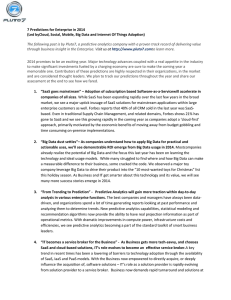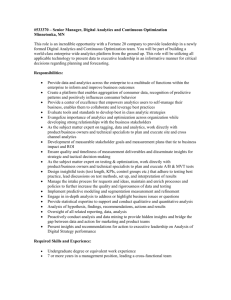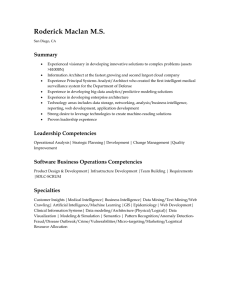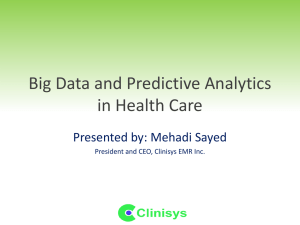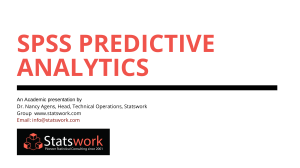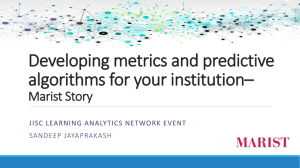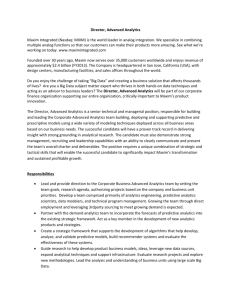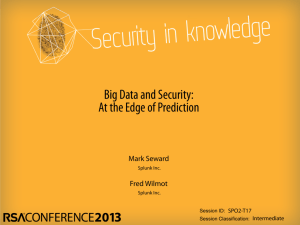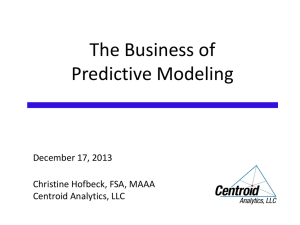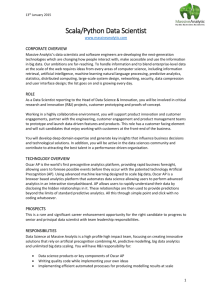Course Outline
advertisement
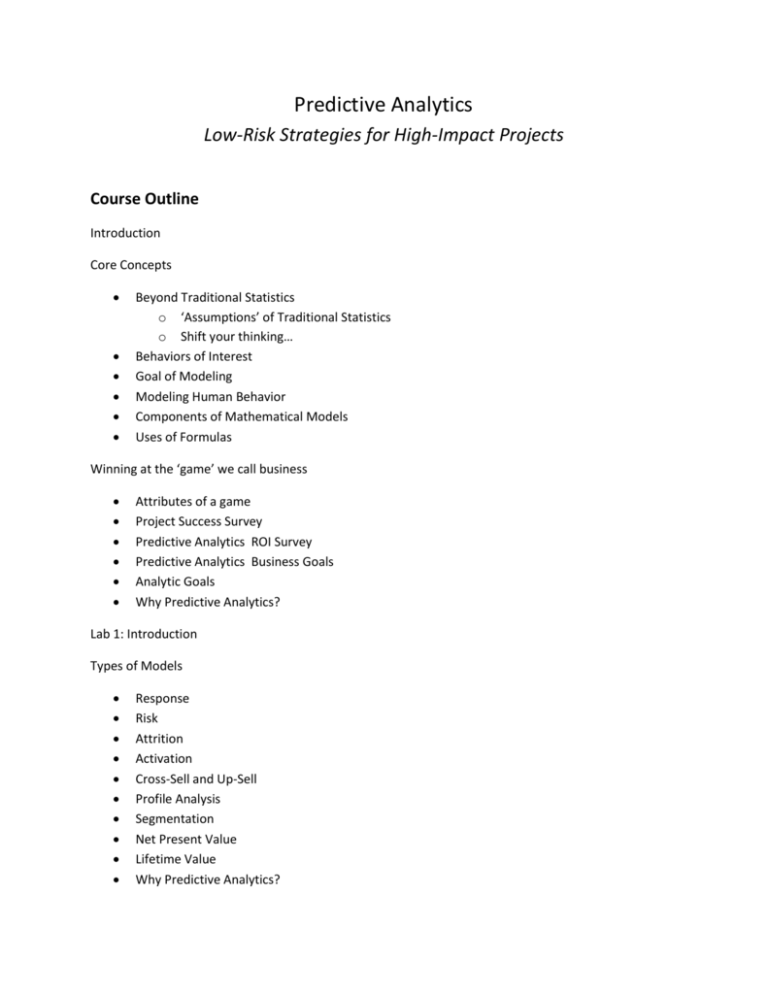
Predictive Analytics Low-Risk Strategies for High-Impact Projects Course Outline Introduction Core Concepts Beyond Traditional Statistics o ‘Assumptions’ of Traditional Statistics o Shift your thinking… Behaviors of Interest Goal of Modeling Modeling Human Behavior Components of Mathematical Models Uses of Formulas Winning at the ‘game’ we call business Attributes of a game Project Success Survey Predictive Analytics ROI Survey Predictive Analytics Business Goals Analytic Goals Why Predictive Analytics? Lab 1: Introduction Types of Models Response Risk Attrition Activation Cross-Sell and Up-Sell Profile Analysis Segmentation Net Present Value Lifetime Value Why Predictive Analytics? Low-Risk / High-ROI Project Design Low-Risk / High-ROI Projects Phased Development Cycle Positive Impact Behavior Modeling Negative Impact Behavior Modeling Conflict Resolution Modeling Ranking Across the Continuum Dimensionality Enhancement Refining Precision Forecasting Lab 2: Opportunity Conceptualization The CRISP-DM Process Model Environment Development Data Sandbox CRISP Development o Business Understanding o Relationship Solution Space o Determine Modeling Objectives o Data Understanding o Data Preparation o Modeling A Sampling of Commercial Data Mining Software Products o Validation o Implementation Predictive Analytics is Analysis… not Engineering Business Understanding Project Team Performance Metrics o Determine Business Objectives o Conversion: Objectives to Metrics o Handling Multiple Metrics o Lift and Gains Chart Interpretation o Custom Performance Charts o Enhancing Performance with Threshold Evaluation o Calculating the Current Baseline: Uplift Analysis Lab 3: Performance Metrics Modeling Objectives o The Case for Classification o Prioritize the Dependent Variable o Precision Requirements o Training for what “should be done…” not what “was done” o Confirming Compatibility o Defining Modeling Objectives o Resource Availability Experimental Design o How Much Data is Needed to Develop a Model? o Training Data for Classification o Training Data for Prediction o How Many Variables? o Purpose of Experimental Design o Experimental Design: Statistics vs. Predictive Analytics o Data Sets Used o Type of Data Distribution Lab 4: Experimental Design & Data Sandbox Construction Data Understanding Data Set Determination Availability Requirements Planning Data Quality Issues o Data Errors o Outliers o Missing Data Data Types: Behavioral Characteristics o Demographic Data o Behavioral Data o Psychographic Data Data Types: Mathematical Characteristics o Qualitative Variables Categorical Data Nominal Data o Quantitative Variables Ordinal Data Interval Data Continuous Data Lab 5: Data Understanding Data Preparation Data Representation Expectations o Natural Values o Binning o Bin Boundary Determination o Open Ended Ranges o Collapsed Sets o 1ofN Representations o Thermometer Representation o Bipolar Representation o Fuzzy Boundaries o Multiple Boundary Strategies o Controlling Error Data Transformation Expectations o Conversion to Linear o Converting the Shape of the Distribution o Ratios o Roll-ups o Domain Specific Transformations Data Resource Consumption Considerations Data Extraction for Replicability Lab 6: Data Preparation Modeling Matching Techniques to the Project Goals o Classification Modeling Techniques o Forecasting Modeling Techniques Variable Selection Candidate Model Evaluation Lab 7: Model Development Validation & Evaluation Lab 8: Model Evaluation & Validation Deployment End User Interface Model Run Cycle Model Maintenance Summary and Next Steps Formal Project Assessment o Business Understanding o Data Understanding o Report of Findings & Recommendations Resources

